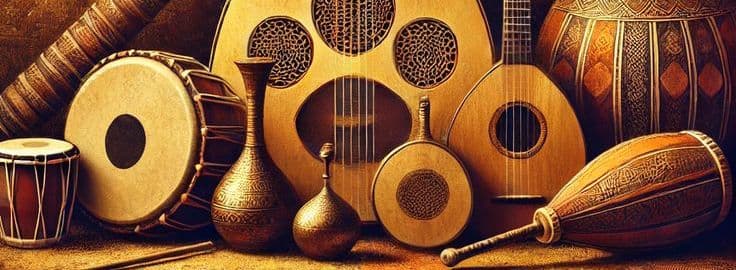
Swar Lipi
स्वर लिपि
The musical symbols or notations are represented in the middle octave as follows. Understanding these symbols is essential for reading and writing Indian classical music notation.
Quick Reference
Basic Symbols:
• Dot below = Mandra Saptak
• No symbol = Madhya Saptak
• Dot above = Taar Saptak
Modifications:
• Line below = Komal
• Line above = Teevra
• Dash (-) = Duration
Musical Notation Reference Table
| Index | Description | Notation | Category |
|---|---|---|---|
1 | For Mandra Saptak, a dot is placed below the note. | Pa,Dha,Ni | Saptak |
2 | There is no symbol above or below the notes for Madhya Saptak. | Sa, Re, Ga, Ma, Pa | Saptak |
3 | For Taar Saptak, a dot is placed above the note. | Sa,Re,Ga,Ma | Saptak |
4 | A Komal (flat) note is shown with a line underneath. | Re,Ga,Dha,Ni | Swara |
5 | In a Teevra (sharp) note, the Ma note is shown with a line above. | Ma | Swara |
6 | In Taar Saptak, Komal notes are shown like this. | Re,Ga | Saptak |
7 | In Mandra Saptak, Komal notes are shown like this. | Dha,Ni | Saptak |
8 | The number of horizontal lines '-' after a note indicates how long it should be stretched when sung. | Ga--, Re--, Mo-- | Duration |
9 | Notes that have a curve below are to be understood as sung in one beat. | SaNiDha | Duration |
10 | If a note is enclosed in brackets, then sing the previous note, that note, the next note, and the same note again — all in one beat. | (Pa) = DhaPaMaPa (Ga) = ReGaMaGa | Ornament |
11 | If there is an inverted curve above the notes, it indicates a Meend (glide). One should glide from the first to the last note while singing. | Re Pa | Ornament |
12 | Comma ( , ) represents a short pause, similar to a pause in English. | GaRe, PaDhaNi, PaSa | Pause |
13 | The symbol of the Sam (first beat) of the Taal (rhythm). | X | Taal |
14 | The symbol of the Khaali (empty beat) in the Taal. | 0 | Taal |
15 | The numbers given for other claps in the Taal, respectively: | 2, 3, 4 | Taal |